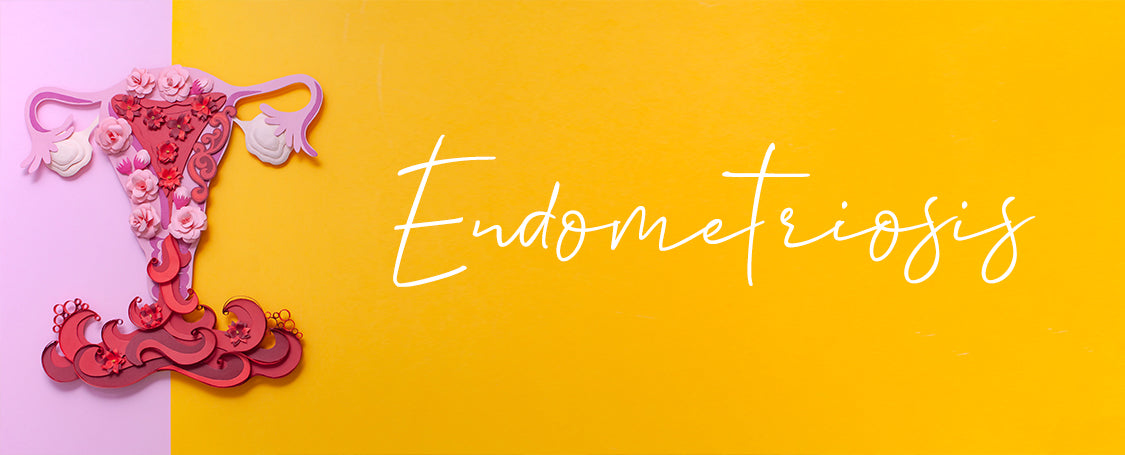
The endometrium is the inner lining of the uterus and every month the tissues thicken in preparation for pregnancy. If no conception takes place, then the endometrium sheds the linings and women have their monthly menstrual cycle.
Sometimes the tissue that lines the inside of the uterus grow outside of the uterus and become a painful condition called endometriosis. It is an issue affecting about 10% of child-bearing women and can start as early as adolescence. Normally, endometriosis goes away after menopause and is rare to reoccur after menopause.
Hormonal changes can affect endometrial tissue and the uterus area becomes inflamed. The tissue outside of the uterus doesn’t break down as it should during your period cycle and becomes trapped in your pelvis. They continue to grow, thicken and bleed in response to the hormones of your period cycle. Over time the tissues do heal but this process produces scar tissue. This scar tissue can form on the abdomen lining causing the uterus, ovaries, fallopian tubes and bowel to stick together. These points are called ‘adhesions’. You will experience extremely painful periods and a possible reduction in fertility.
The reproductive organs are most affected but sometimes the lesions are found in the bowel and bladder.

Unfortunately, the exact cause is unknown. An inconsistent period cycle may be a factor. Scientists have theories but none are proven clinically.
One theory is that the menstrual blood flows back through the fallopian tubes, instead of eliminating through the vagina.
Another is that the hormones alter the external uterus cells, to be similar to the internal lining cells.
It may also be a faulty immune system or possibly endometrial cells carried out of the uterus into the lymphatic system.
The Royal Women’s Hospital in Victoria has received a federal grant of $3.9 million to conduct a new research program, which is aimed at improving diagnosis and treatment.
There are 4 types of endometrioses: - minimal, mild, moderate and severe.
Minimal has small superficial lesion infiltration on your ovaries, that do not invade deeply.
Mild has lesions spreading to the pelvic lining
Moderate involves deeper lesions on your ovaries, fallopian tubes, uterus, rectum and pelvic linings.
Severe is when the endometrial cells enter the appendix, heart or lungs.
There can be a wide variety of clinical presentations, depending on the extent of the tissue growth. Most times this occurs over a lengthy time frame, before you realise that there are issues.

Symptoms are generally constrained around pelvic pain levels. You may have mild endometriosis and yet experience debilitating pain or the opposite and just have mild cramps. The severity doesn’t match the stage of the disease. Heavy bleeding, discomfort with bowel movements, and pain during sex are good indicators of the disease, but always differ between women. Fatigue, anxiety and bloating are nominal symptoms too. You may be having trouble falling pregnant. It can take a long time to diagnose so it is important to consult with a gynaecologist.
Tests will include a pelvic exam with the Dr feeling for abnormalities, or an ultrasound which identifies cysts often associated with endometriosis, or an MRI to determine the size and location of the lesions, or a laparoscopy (keyhole surgery) to ascertain the extent. A laparoscopy is the only certain method to identify endometriosis.

TREATMENTS
Fortunately, treatment is readily available to alleviate symptoms. Medication or surgery is required, with surgery opted for if the initial treatment fails.
Hormone therapy isn’t a permanent solution but can be useful in reducing or stopping the pain. Birth control pills help women to regulate their periods and have a lighter menstrual flow and assist in controlling the build up of endometrial tissue.
Some medications can stop your period altogether but may not necessarily stop the tissue growth.
Surgery to remove the lesions may be necessary, generally through a laparoscopy procedure.
In severe cases, a hysterectomy – the complete removal of your ovaries and uterus – may be essential to alleviate the heavy bleeding, pain and severity of the infected tissues.
Every woman reacts differently and there is no one solution to fit all. Your Dr will assist you to work out the best result.

Written by Mona Hecke
Mona Hecke is a degree qualified Naturopath, nutrition specialist and health and wellness writer.
With over 20 years in the health industry, beginning with a focus on children and families, and a bestselling book ‘The Lunchbox Revolution’, Mona is now empowering women through education and conversation to take action and embrace change. Gut health, mindfulness, nutrition, hormones, and menopause are the topics that women want and need to know to create their healthy future.
Mona holds certifications in Lifestyle Coaching, Kinesiology, holistic herbal medicine, and nutrition.
A recognised leader in the health industry, Mona’s strong social media presence and passion for influencing change will continue to be a catalyst for health reform for the benefit of every Australian.






